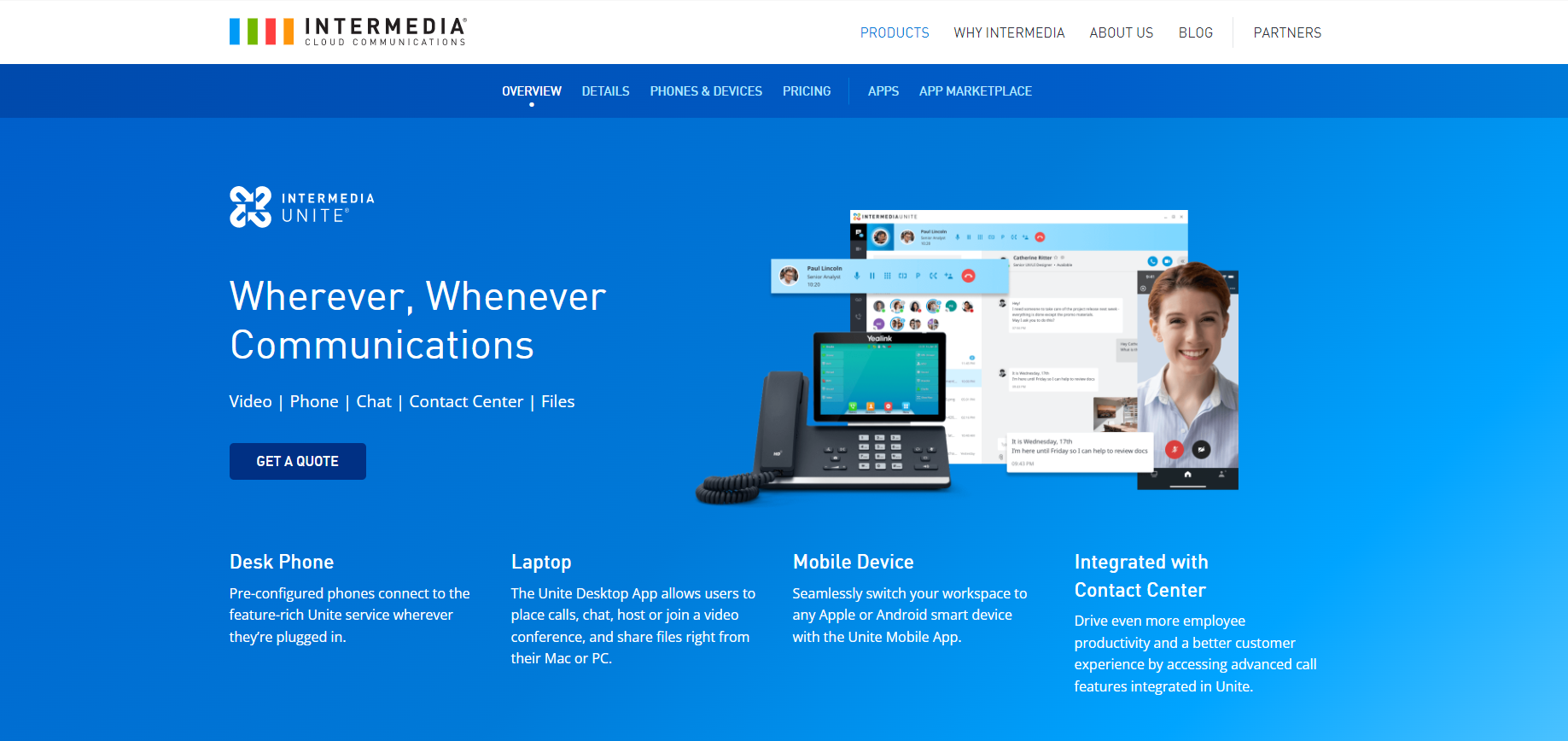The Development of Phone Equipments: From Landlines to VoIP
The world of phone systems has gone through an impressive change throughout the years. From the conventional landline systems that dominated households and services for decades, we have actually currently transitioned to the era of Voice over Web Method (VoIP) This development has actually transformed the means we connect, offering a much more cost-efficient and versatile remedy. In this post, we will certainly discover the trip of phone systems, starting from the very early telephone technology to the intro of electronic phone systems, and finally, the development of VoIP. We will also discuss the advantages of making use of VoIP modern technology, such as raised scalability and wheelchair. As we dive right into the future of phone systems, it ends up being apparent that VoIP is below to stay, forming the way we connect and communicate in the digital age.
Early Telephone Innovation
Early telephone technology's advancement played a vital role in reinventing communication techniques. At the leading edge of this technical improvement was Alexander Graham Bell, who is credited with designing the telephone in 1876. Bell's innovation marked a considerable milestone in the history of communication, as it enabled real-time, long-distance conversations to happen.
The very early telephone systems counted on landlines, which were physical connections in between two telephones via a network of cords. These landlines allowed voice signals to be sent over long ranges, bringing individuals more detailed with each other and facilitating instant interaction. While the preliminary telephone systems were limited in scope and accessibility, they laid the structure for the advancement of even more advanced interaction modern technologies in the future.
One of the essential improvements in very early telephone modern technology was the intro of the switchboard system. The switchboard permitted several telephones to be connected to a central exchange, enabling users to make telephone calls to different places. This development considerably expanded the reach and access of telephone communication, as it eliminated the need for a straight physical link between 2 telephones.
Transition to Digital Phone Equipments
The development of telephone technology brought about the transition from landlines to electronic phone systems, marking a significant change in the means communication was conducted. Digital phone systems, additionally known as Voice over Net Protocol (VoIP) systems, utilize net links to transmit voice signals rather than typical copper cables. This transition to digital phone systems has actually brought around countless advantages for businesses and individuals alike.
VoIP systems eliminate the need for numerous phone lines, as all telephone calls are sent over the internet. In addition, worldwide calls can be made at significantly lower rates contrasted to traditional phone systems.
One more advantage of digital phone systems is boosted capability. Electronic phone systems can quickly integrate with other company communication devices such as e-mail and instant messaging, supplying a combined and structured communication experience.
Intro of Voip Innovation
With the intro of VoIP innovation, the landscape of phone systems started to move in the direction of an extra cost-efficient and reliable interaction option. VoIP, or Voice over Internet Protocol, enables customers to make phone calls over the internet rather than typical landlines. This innovation transforms voice signals right into electronic packets and transfers them over data networks, removing the demand for dedicated phone lines.

Another advantage of VoIP is its adaptability and scalability. With standard phone systems, eliminating or including phone lines can be a cumbersome and costly procedure. However, with VoIP, customers can easily add or get rid of lines as required, making it an extra scalable service for businesses of all sizes.
In addition, VoIP innovation supplies a vast array of attributes that improve communication efficiency. These functions consist of voicemail to email transcription, phone call forwarding, meeting calls, and auto-attendant systems. These features not only boost performance yet additionally make interaction more available and practical.
Advantages of Using Voip
Exactly how does VoIP technology offer significant advantages over typical phone systems? VoIP, or Voice over Web Protocol, has actually changed the method we communicate by offering countless benefits that conventional phone systems just can not match.
Unlike traditional phone systems that depend on physical phone lines, VoIP uses a net link to transmit voice data. In addition, VoIP systems often supply competitive prices strategies that consist of endless domestic calls, more minimizing interaction costs.
Secondly, VoIP modern technology offers increased versatility and scalability. Conventional phone systems are limited by the variety of physical phone lines, making it costly and tough to add or remove lines as required. On the other hand, VoIP enables easy scalability, permitting organizations to add lines or expansions without the demand for additional hardware.
Another benefit of VoIP is its abundant functions and assimilations. VoIP systems frequently come with a variety of innovative functions such as voicemail, telephone call forwarding, telephone call recording, and automated assistants. These attributes boost productivity and client service. Furthermore, VoIP can perfectly incorporate with other interaction tools like email, immediate messaging, and video conferencing, offering a linked communication experience.
Lastly, VoIP deals enhanced mobility and availability. With VoIP, customers can make and obtain telephone calls from anywhere with a net link, permitting for remote job and service continuity. This degree of availability is especially helpful for businesses with remote workers or multiple office locations.
Future of Phone Equipments
As innovation continues to advancement, the future of phone systems holds the pledge of even better innovation and seamless interaction. With the quick development of expert system (AI), online fact (VIRTUAL REALITY), and the Web of Points (IoT), the possibilities for phone systems are expanding beyond traditional voice telephone calls.
One key facet of the future of phone systems is the integration of AI. AI-powered virtual assistants, such as Siri and Alexa, have currently ended up being commonplace in our homes. NEC Authorized Dealer Houston TX. In the future, these assistants will likely play a larger function in handling our call, organizing meetings, and also carrying out discussions on our behalf. AI will certainly likewise make it possible for innovative telephone call directing and filtering, making sure that official statement telephone calls are guided to the appropriate individual or department without the requirement for manual intervention.
Another area of growth is the combination of phone systems with various other communication channels. With the rise of messaging apps and social media sites platforms, users are increasingly shifting in the direction of text-based communication. In the future, phone systems will seamlessly incorporate voice, video clip, and text-based interaction channels, allowing customers to change in between them effortlessly.

Conclusion
Finally, the evolution of phone systems from landlines to VoIP innovation has reinvented interaction. Very early telephone innovation laid the foundation for digital phone systems, which paved the method for the introduction of VoIP. The advantages of using VoIP, such as cost-effectiveness and versatility, make it a favored option for numerous individuals and services. As innovation proceeds to breakthrough, the future of phone systems holds the capacity for more improvements and enhancements in interaction effectiveness.
In this write-up, we will certainly check out the trip of phone systems, beginning from the early telephone technology to the intro of digital phone systems, and finally, the arrival of VoIP. Digital phone systems, additionally recognized as Voice over Internet Protocol (VoIP) systems, make use of net links to transfer voice signals rather of conventional copper cables. With conventional phone systems, adding or getting rid of phone lines can be a difficult and expensive procedure. Unlike conventional phone systems that rely on physical phone lines, VoIP utilizes an internet read the article link to send voice information. Typical phone systems are limited by the number of physical phone lines, making it costly and tough to add or get rid of lines as required.